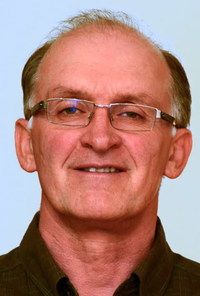Thursday, April 12, 2012
Interview with Deane Little, New Sky Energy

How do you take carbon dioxide, and turn that into something more useful (and less polluting and harmful) to mankind? Boulder-based New Sky Energy (www.newskyenergy.com) thinks it has the solution, using CO2 in the atmosphere to create industrial chemical products. The firm has been recognized for its technology efforts, most recently by Imagine H2O, and the Clean Tech Open, and we thought it would be interesting to hear about the company. Deane Little is CEO and CSO of the company, and told us a bit about the technology the firm is developing.
What's the story behind New Sky Energy?

Deane Little: New Sky is a five year old company, founded in 2007 here in Colorado. I grew up in the Boulder area, and had moved away for many years, and ended up doing post doctoral work at Stanford. I decided I was tired of California and moved back to Boulder in 2006. What New Sky Energy is working on, is CO2 negative manufacturing. We have technology that allows us to capture CO2 out of the air, or flue gas, and convert that into useful products. The brainstorm behind the technology was an idea I cam up with in early 2007, that you could split water in a certain way using renewable or other low carbon energy, to create clean chemical products. One of those products is sodium hydroxide, or lye, which is an active CO2 trapping agent. It's a two step process--you split water using a unique pathway, and then have a CO2 capture agent which reacts with CO and form carbonates. Carbonates are things like baking soda, soda ash, or calcium carbonate, which are very abundant, valuable minerals which can be used in a variety of industrial processes or as a building material.
How was the technology developed?
Deane Little: I did my Ph.D. research while I was at Florida State University, at Oakridge National Laboratory. I spent several years in Tennesse, and it was there that I first learned that you could use sodium hydroxide to capture CO2. It wasn't a new discovery--it's actually well known knowledge to use it that way. The problem is, using conventionally manufacture sodium hydroxide, which is what we were doing at Oak Ridge, is a very polluting process, and generates a lot more CO2 than you can trap. It also generates almost a ton of chlorine gas for every ton of CO2 you trap. New Sky has a clean and sustainable, energy efficient way of entrapping huge volumes of CO2, without those issues.
What was the breakthrough that you figured out?
Deane Little: That's a great question. In early 2007, when I was giving lots of thought on how to trap CO2 out of the air, I knew that industrial chemistry was a 50 billion annual market. However, knowing that the existing technology wouldn't work, I turned my mind to finding technology that would be sustainable and energy efficient, and wouldn't have any toxic byproducts like chlorine. While doing research online, I discovered that if you chose the right pathway for splitting water, it doesn't produce chlorine, instead, it produces other byproducts such as sodium hydroxide. Using solar or wind energy, I realized that we could produce hydrogen, oxygen, and sulfuric acid, which are big commodity chemicals.
How far along are you to commercializing this technology?
Deane Little: We actually have generated significant revenues already, doing contracts for big energy and manufacturing companies. BP is one of our clients. We also have another client, who I can't reveal due to confidentiality, which is one of the world's largest manufacturers.
Is that something that is being implemented by those companies in the real world?
Deane Little: We're at the prototype stage, though we've already scaled up our technology over 100 fold. There's probably another 100-fold to go. The technology is ready to implement in the field, we just need some resources to do that.
What do you think will trigger people to adopt your technology?
Deane Little: I think it's when people realize that the common materials in your built environment--that's wood, wall board, and even glass--are either made form carbon, or are being made using carbonates in manufacturing. For example, glass uses lots of carbonates. Wallboard and cement also contain lots of carbonates. When you realize that you can make all of those materials in your built environment out of CO2 from the air, that's a really exciting step. If you look around the building you're in, our vision is that all of those are full of CO2 captured from the air or flue gas.
What's the next big step for your company?
Deane Little: We're very close to doing an investment round right now, which will enable us to grow the company much more rapidly. We're also in a joint development agreement with one of the largest manufacturers in the world, going through economic case studies in Europe and the United States. We're planning to advance that to commercial pilot projects in the winter and spring of the coming year.
Thanks, and good luck!